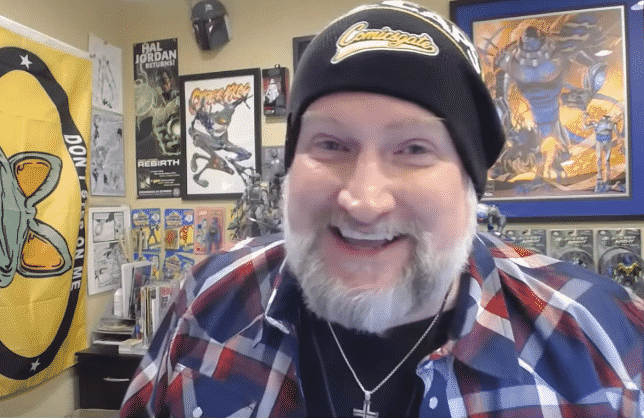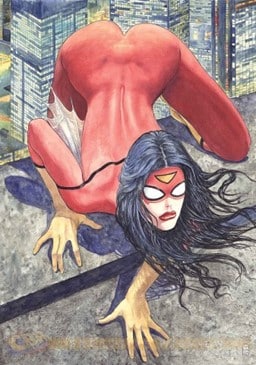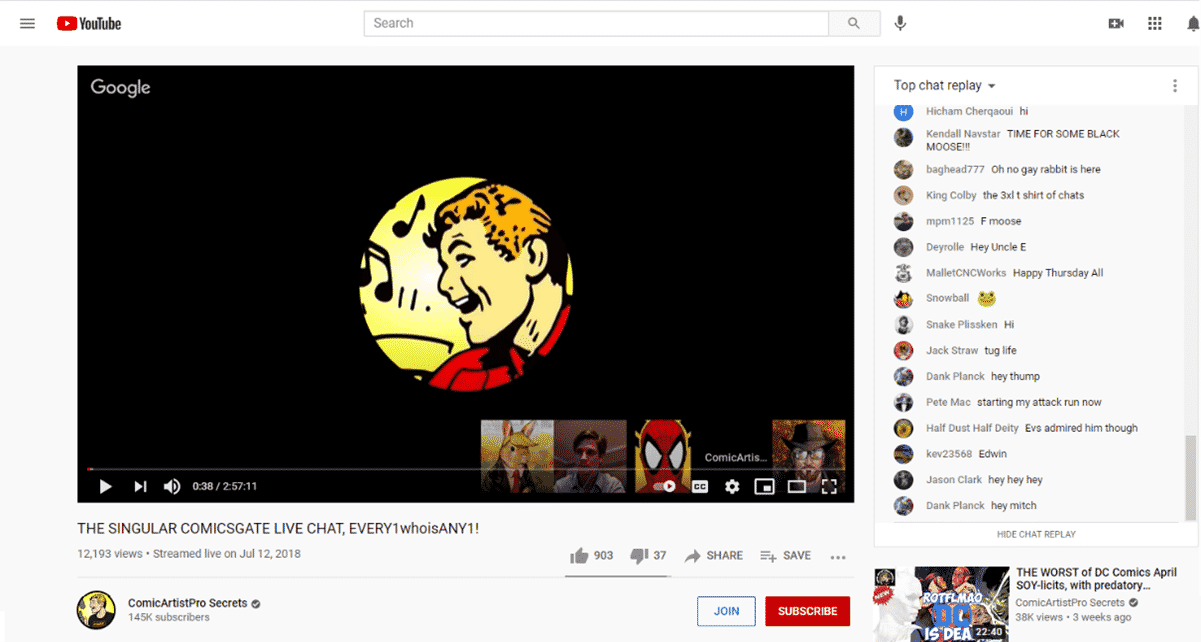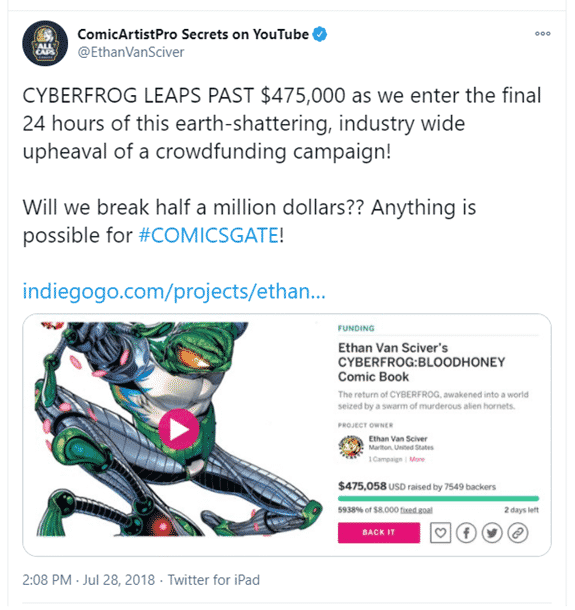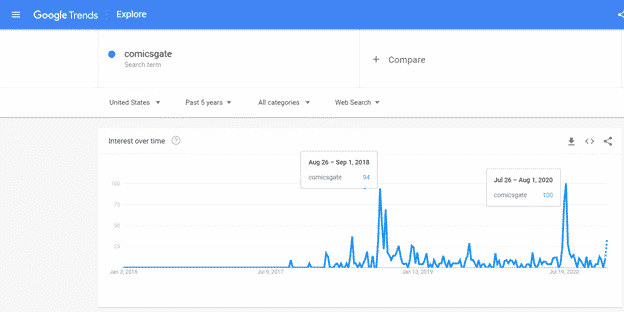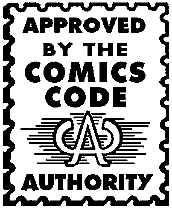The COMICSGATE Trademark
Summary
The mark COMICSGATE is now in public use. This letter will: (1) describe the legal rights that exist at this time in the COMICSGATE trademark, (2) establish the person with the strongest ownership claim is Ethan Van Sciver, (3) suggest pragmatic steps for shoring up these rights, and finally, (4) how COMICSGATE might lose its status as an enforceable trademark and ways to avoid this outcome.
I. Introduction to Intellectual Property Law
The word COMICSGATE is now in general public use. There is a comicsgate.net website as well as a comicsgate.org website. COMICSGATE has been used in Twitter protests on diversity issues in comics, as the title of at least two different YouTube shows, in connection with comic book crowdfunding and, finally, as the subject of several trademark applications.
This letter will summarize trademark rights in the mark, COMICSGATE. I will first describe the applicable trademark law and then sort out the trademark rights that have arisen, if any, from the public uses of COMICSGATE.
A. Copyrights
The issues discussed in this letter concern comic books. Because comics are typically protected by both trademark and copyright, a brief discussion of both forms of intellectual property will benefit the lay reader. Note that both are extremely large bodies of law and what follows is merely an outline of their major concepts.
Any one comic book dispute can give rise to both copyright and trademark infringement. Nevertheless, copyrights and trademarks are wholly distinct forms of intellectual property. A copyright protects original works of authorship (published and unpublished) including not only comics and other literary works but dramatic and musical artistic works: movies, photographs, songs, computer software, and architecture. Copyrights need not be formally claimed but are created automatically the moment the work is created and fixed in a “tangible form” e.g. written down or recorded.
But copyright protection is narrow, often narrower than the owner realizes. It does not protect the discovery of facts, ideas or the creation of short phrases such as titles, names and slogans. Also a copyright owner cannot prevent “fair use” of the copyrighted work. The fair use doctrine promotes freedom of expression by allowing unlicensed use of copyrighted works in limited circumstances, e.g. commentary, criticism, news reporting, teaching and scholarship. Fair use also includes “transformative uses,” that is, uses that add something or change the character of the work. For example, the cover of the Beatles’ Sgt. Pepper album makes use of various photographs to form a collage. Each photograph has a copyright owner, typically the photographer. The owners could not, however, enforce their copyrights against the Beatles. A court would almost certainly consider the album cover a “transformative use” of the photos and thus allow their use, unlicensed, in the collage.
With respect to comics, the copyright owner of a distinct superhero can rightfully sue to stop unlicensed artwork of the superhero from appearing on T-shirts, coffee mugs or decals on automobiles. These are called “derivative works” and are protected. On the other hand, the owner cannot prevent others from depicting an image of the superhero in a blog post or during a video commentary. This would be a protected “fair use.”
B. Trademarks
A trademark, in essence, is any distinctive symbol that a customer has come to associate with a particular seller of goods or services. Trademark law ideally serves several valuable functions. It protects the seller from others who would use the same mark (or a confusingly similar one) to steal the seller’s customers. It promotes quality because without a distinctive mark a seller’s mistakes or low quality products could not be traced to their source. Note at this point a distinctive feature of trademark law, the consuming public also benefits. Indeed, a common adage, and an important element to keep in mind, is that the public is a party to all trademark disputes and that their interests are paramount. This public interest can lead to unexpected outcomes. For example, licensing a trademark improperly can lead to loss of rights despite the wishes of both the licensor and licensee, as explained below.
II. Establishing Trademark Ownership
Trademark ownership is established by using the mark in commerce. Initially, customers do not associate the mark with a good or services and without this association there are yet no trademark rights. With each sale of goods or services, however, the seller builds up greater and greater legal rights as customers recognize the mark and associate it with the goods or services. In time the mark comes to symbolize a certain quality with the public, a so called “good will.” Often “good will” allows a seller to charge an excess retail price over the “book value” of the good or service. Once trademark rights have been established, they can be sold or licensed to others. Importantly, the good will symbolized by the mark must be kept intact with the sale or licensing.
Once a mark becomes recognized in commerce, certain common law trademark rights attach, typically state laws prohibiting unfair trade practices. If the mark owner takes the additional step of federal trademark registration, the mark owner can sue in federal court. Most, if not all, owners of valuable marks register them. Federal courts are widely considered the better place to enforce trademark rights. The federal law and the federal courts’ experience make enforcement more predictable than in state courts.
In the United States, anyone can apply for trademark registration. At the U.S. Patent and Trademark Office (USPTO) a trademark attorney will carry out a relatively brief examination, ensuring that the mark complies with federal law. For example, the mark must not be merely a generic description of the good or service. The attorney will also search the trademark registry to insure the mark is not confusingly similar to one in the registry.
In a modern development, one can begin the registration process before one is using the mark in public, so long as the applicant has a bona fide intent-to-use the mark. But make no mistake, while registration provides prima facia evidence of trademark rights, valid rights are only obtained by use in commerce. Indeed, quite commonly registered trademarks and trademark applications are challenged and, if the challenger can establish a prior public use of the mark, the applicant will lose his registration.
III. Timeline of COMICSGATE Use in Public
The significant public uses of COMICSGATE are listed in the following timeline.
| Date | Use of COMICSGATE |
| 2011 | Ahmed Abdo COMICSGATE.NET website and Comics Gate Twitter account used to promote Arabic translations of comic books |
| 2014 – 2017 | #COMICSGATE protest hashtag |
| April 12, 2017 | Richard C. Meyer YouTube show, Diversity in Comics, which is a major hit among COMICSGATE hashtaggers on Twitter, also “Marvel before SJW” |
| 2017 | Ethan Van Sciver leads twitter discussions of #COMICSGATE issues |
| July 12, 2018 (at least) [1] | Ethan Van Sciver launches COMICSGATE YouTube show, COMICSGATE LIVE, on the ComicArtistPro Secrets YouTube channel, uses COMICSGATE in crowdfunding, called “Caesar” of COMICSGATE |
| July. 28, 2018 (at least) [2] | Ethan Van Sciver uses COMICSGATE in crowdfunding on Twitter |
| Sept. 3, 2018 | TM Reg. No. 6,102,744 – pending cancelation proceeding |
| April 15, 2020 | TM Appln. 88/872,841 – suspended |
| May 17, 2020 | TM Appln. 88/919,818 – suspended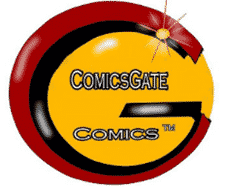 |
| May 20, 2020 | TM Appln. 88925542 – Certification Mark – suspended |
As I will describe below, despite these multiple uses by multiple people, one and only one individual has obtained superior rights to the COMICSGATE trademark, Ethan Van Sciver.
A. 2011 – Comicsgate.net and ComicsGate Twitter account
Turning now to the specific instances of public use, COMICSGATE’s first appearance of any significance was in 2011 where a group including Ahmed Abdo began the website comicsgate.net [3] and the ComicsGate Twitter account.[4] These accounts use COMICSGATE, generally, to promote English comics in the Arab world and, specifically, to translate comics into Arabic.
Comicsgate.net
In view of his early public use of the mark, Mr. Abdo’s potential trademark rights merit some analysis. Importantly, use of a mark in a foreign country does not give rise to rights in the United States if the goods or services are not sold or rendered in the United States. See Linville v. Rivard, 41 USPQ2d 1731 (TTAB 1996), aff’d, 133 F.3d 1446, 45 USPQ2d 1374 (Fed. Cir. 1998); Aktieselskabet af 21.November 2001 v. Fame Jeans Inc., 77 USPQ2d 1861 (TTAB 2006); Buti v. Impressa Perosa S.R.L., 139 F.3d 98, 45 USPQ2d 1985 (2d Cir. 1998); Mother’s Rests. Inc. v. Mother’s Bakery, Inc., 498 F. Supp. 847, 210 USPQ 207 (W.D.N.Y. 1980); see also Honda Motor Co., v. Winkelmann, 90 USPQ2d 1660 (TTAB 2009) (“[T]he evidence that applicant relies upon through its foreign registrations and Internet printouts does not demonstrate trademark use for the claimed goods. Further, these documents do not show that applicant has an intent to use the mark in the United States.”) Mr. Abdo appears to have used the mark only in Arab countries, not in the U.S. It is also significant that Mr. Abdo does not seem to have asserted his rights in the U.S. He has not filed a U.S. trademark application and has not challenged subsequent uses of COMICSGATE in the U.S. Almost certanly Mr. Abdo has no U.S. trademark rights to this mark.
B. 2014 to 2018 – The #COMICGATE and #COMICSGATE Protests
The next significant use of COMICSGATE began in 2014. At that time the singular form, COMICGATE, was used interchangeably with COMICSGATE. Possibly the first use of this type was in connection with a Spider Woman variant cover. Feminist critics cried foul as they saw the character’s illustration, in particular her rear end, unrealistic and uncomfortably similar to that of an erotic comic book.[5]
Spider-Woman #1 – variant cover, Milo Manara
The cover was canceled.[6] This led to a backlash from fans who viewed this as oversensitive and the cancelation an overreaction. They invoked #COMICSGATE on Twitter to symbolize their frustration.[7] (On a historical note, this was probably derived from #GAMERGATE, an earlier controversy concerning online harassment of women in the video game community.) In the next several months and into 2015 the word was used again to protest classic comic characters being reissued with new identies. Certain fans saw this as mainstream media outlets sacrificing quality for the sake of diversity. Over and over #COMICSGATE was invoked, for example, in protesting a female Thor, Ms. Marvel, a female Iron Man, and Spider Gwen.[8]
There are no trademark rights arising out of these public uses for the simple reason, explained above, no one used the mark in commerce; no consumers associated COMICSGATE with the sale of a particular good or service.
C. April 12, 2017 – Richard C. Meyer – “Marvel before SJW” YouTube series
Richard C. Meyer, creator and author of the graphic novel series Jawbreakers, and popularly considered an early founder of the so-called “Comicsgate movement” — although he asserts that the label was applied to him by his critics — began a YouTube video series called Diversity in Comics (now: Comics MATTER w/ Ya Boi Zack) [9] in line with the movement. Mr. Meyer discussed classic comics and how they held up in view of the tastes of modern “Social Justice Warriors.” The popularity of the channel grew as additional #COMICSGATE controversies unfolded.[10] For example, in the “milkshake incident” from 2017, a female Marvel Comics editor was pictured drinking milkshakes with female colleagues. Unfortunately the editor was trolled with sexist attacks; afterword many came to her defense. When members of the public criticized the skill of that particular editor, however, those criticisms were lumped in with the trolling and attacked as sexist. Comic book fans, including Meyer, discussed whether objective criticism of performance could be fairly conflated with sexist trolling.
As was the case above, Mr. Meyer had not used COMICSGATE in commerce and so obtained no trademark rights.
D. July 2018 – Ethan Van Sciver’s YouTube Channel And Crowdfunding
1. COMICSGATE YouTube channel
Ethan Van Sciver’s COMICSGATE YouTube Show – July, 12, 2018
On or about July 12, 2018 Ethan Van Sciver, a veteran illustrator of both DC and Marvel Comics, including runs on Green Lantern and the Flash, began using COMICSGATE [11] in connection with crowdfunding several comic books (e.g. Cyberfrog, Red Rooster and Trump Space Force) on his YouTube channel, “ComicArtistsPro Secrets,” [12] which also discussed the politicization of the comic book industry, television and movies, including Disney’s iteration of Star Wars towards “social justice” politics. In the entertainment industry, including comics, Mr. Van Sciver says this resulted in conservative and Republican creators being blacklisted, including himself, simply for following Mr. Meyer’s YouTube channel, Diversity in Comics, and has also seen comic book storylines themselves becoming overtly political, pandering and promoting a social justice agenda.
2. COMICSGATE Used In Crowdfunding
Also as of July of 2018 Van Sciver was in the midst of a crowdfunding campaign for his comic, Cyberfrog: Bloodhoney.[13] A tweet from July 28, 2018 [14] illustrates its remarkable popularity, having raised $475,000 at the time:
Because Van Sciver was using COMICSGATE in commerce, specifically, in both crowdfunding and as a comic book brand, he began acquiring legal trademark rights in the mark with respect to these two markets. See e.g. In re ECCS, 94 F.3d 1578, 39 USPQ2d 2001 (Fed. Cir. 1996) (J. Rich) (“[T]he most fundamental aspect of United States trademark law . . . [is] that trademark ownership and attendant rights are acquired in the marketplace by use”)
3. Public association of COMICSGATE with Van Sciver
The strength of the mark is directly proportional to how closely customers associate the mark with the products and services sold under that mark. The following data show a strong association in the case of COMICSGATE:
Google Search Data. Google searches for COMICSGATE peak on two dates.[15] Both happen to be dates associated with Van Sciver’s use of COMICSGATE. The two dates are (1) September of 2018, [16] when Mr. Van Sciver launched his second Cyberfrog campaign, a variant cover of Cyberfrog: Bloodhoney[17] and (2) July of 2020, when he released the cover of Cyberfrog 2: Rekt Planet.[18] In the later event, the cover illustrator was accused of having “done covers for comicsgate, a hate group.” [19] [20] [21] The accuser later apologized. [22] [23]
The following Google Trends data show “COMICSGATE” searches peaking on both dates: the Aug 26-Sep 1, 2018 peak for the Cyberfrog variant cover announcment and Jul. 26 – Aug. 1, 2020 peak for the Cyberfrog 2 cover release and “hate group” controversy.
“Caesar” of Comicsgate. In addition to the Google search results, objective evidence of the mark being associated with Van Sciver’s products is his widely recognized nickname, “the Caesar of COMICSGATE” which arose in 2018 and has continued up to the present time. July 26, 2018 @zombieshitposts reply to @EthanVanSciver (“Hail, Caesar”),[24] Sep 3, 2018 @beater909 reply to @EthanVanSciver (“Long the #comicsgate empire dilly dilly hail Caesar”), [25] Aug. 8, 2018 @Magamanomega post (“@EthanVanSciver food for though for your next comicsgate stream! The sjw says 16,000 is nothing, we gotta get it up, while getting that sjw outta here! HAIL ETHAN VAN CAESAR!”), [26] ; Aug 12, 2018 @grpeephole reply to @EthanVanSciver (“HAIL CAESAR, MAY THERE BE PIE IN YOUR FUTURE.”); [27] Oct 24, 2019 @bijanni reply to @EthanVanSciver (“Heard of reverse psychology Caesar? Hail Caesar! #ComicsGate #BlameWarCampaign”).[28]
4. A Priority Claim.
It is important to note that Mr. Van Sciver may have an earlier date than his first commercial use which he can use against others challenging this first use date. Trademark law recognizes that even before a commercial use, the public can associate a mark with particular source and the “prior adoption and use” should be taken into account when the mark ownership is challenged. See e.g. Jim Dandy Company v. Martha White Foods, Inc., 458 F.2d 1397 (Cust. Ct. 1972).
This principle was litigated in the context of comics. Marvel’s application for the mark “Plasmer” was challenged by rival publisher Defiant who at the time was using a similar mark in its own comic book series, “Warriors of Plasm.” At first blush Defiant appeared to have a better claim to the mark than Marvel and Defiant asked the court for dismissal of Marvel’s claim of trademark rights. As discussed earlier, trademark rights are only obtained by use in commerce. Defiant’s comics were on sale and Marvel, at that time, had yet to use the mark in commerce.
But Marvel survived the motion to dismiss. This is because prior to publicaton of Defiant’s comic book series, Marvel had publically announced the “Plasmer” comic book. The announcement was part of a ‘widely read’ column called ‘Stan’s Soapbox’ written by Stan Lee, Marvel’s founder. Marvel Comics v. Defiant, 837 F.Supp. 546, 548 (S.D. N.Y. 1993). The court found this, as well as other Marvel promotional activities, were sufficient to associate the goods in the public mind with Marvel. Prior advertisment is not the only way for an owner to tack on a priority claim to this mark, but it must be an “analogous” use.
Thus, if Mr. Van Sciver can show the use of COMICSGATE before his YouTube show that was analogous to his later use in commerce, he can tack this date on as his trademark priority date.
E. The Trademark Applications
1. TM Reg. No. 6,102,744 [29]
This application, by Antonio J. Malpica, is for Comics. It claims a first commercial use date of Sept. 7, 2018, specifically, on the indiegogo.com crowdfunding for the comic “Detective Dead.” [30] It is currently the subject of a cancellation proceeding No. 6102744, brought by Common Sense Press Inc, dba Pocket Jacks Comics, the owner of TM Apps. 88/872,841 and 88/925,542, see below, parts 2 and 4.
The details of the cancellation proceeding are beyond the scope of this letter, but it appears that Mr. Malpica is losing. Regardless of the outcome, this trademark can be challenged by Mr. Van Sciver who can prove an earlier commercial use date of July 12, 2018 and a first use in public of July 12, 2018.
2. TM Appln. 88/872,841 [31]
This application, by Pocket Jacks, is for Comic books. It is an “intent to use” application which, by statute, has a constructive priority date of April 15, 2020, the filing date of the application. It is almost certainly invalid in view of the 2018 first use date of Van Sciver on two independent grounds. (1) Van Sciver’s substantially earlier priority date and (2) because an “intent to use” applicant swears no one else had “the right to use the mark in commerce” this applicant may well be guilty of fraud unless the applicant can explain away his failure to acknowledge Van Sciver’s earlier, superior, rights to use the mark in commerce.
3. TM Appln. 88/919,818 [32]
This application, by ComicsGate Comics LLC, a.k.a. DarkGift Comics is for comic books and graphic novels. Unlike the previous applications which are for the word COMICSGATE, this application is for a colored logo that contains the words COMICSGATE COMICS.
In some cases the unique logo can be enough to distinguish the mark from an earlier one. Unfortunately for this applicant, the USPTO decided otherwise. The word portion of the mark is “more significant or dominant in creating a commercial impression.” and thus the logo was considered confusingly similar to Reg. 6,102,744 and App. 88.872,841 above.
4. TM Appln. 88/925,542 [33]
This application, by Pocket Jacks, has several problems. First, it is for a “Certification Mark.” This is not a mark for use by the owner, but rather a mark used by a certification organization. It is similar to the “U/L” logo for Underwriter’s Laboratory, used to signify safe electronic appliances. Or, in the context of comics, the old Comics Code Authority logo. A certification mark, which by statute cannot be used by the mark owner, is almost surely not what the owner intended. It is true that COMICSGATE was used to protest “social justice warrior” content and one could argue that COMICSGATE represents “non-social justice warrior” content and thus it should be used to “certify” non-social justice warrior content. It is difficult to see how this would become a valid business model, however. Unlike the “Comics Code” which could at least point to some objective standard (censoring adult content), one finds it problematic to conceive of what a “non-social justice warrior” standard would mean in objective terms.
This mark has still other problems, just as 88/919,818 above, it is an “intent to use” application and is confusingly similar to two other applications and is invalid in view of Van Sciver’s earlier commercial use.
IV. Registration and Licensing
A. Registration
While it is true that common law trademark rights are obtained by use in commerce, it is far better as a practical matter for a trademark owner to register is mark. The registrant obtains: a legal presumption of ownership, the exclusive right to use the mark nationwide, a right to sue in federal court and, after a period of time, a presumption of incontestability. A state registration only provides rights within the borders of that one state, and common law rights only in the specific area where the mark is used.
V. Loss of Trademark Rights
A. Abandonment
Under common law, a trademark can be abandoned if it is not used for an extended period of time. Although to establish abandonment one must prove not only lack of use but also evidence of an intent to abandon the mark. In other words, the mark owner can prevent abandonment even after a period of non-use if the owner shows it never intended to relinquish the mark. For marks covered by federal law, non-use for 3 consecutive years is considered prima facie abandonment.
B. Naked Licensing
Even if a mark is in continuous use, rights can be lost if the owner licenses the use of the mark without also insuring a continuation of the type of use or the quality consumers had come to expect. In other words, one must license the “good will” associated with the mark as well as the mark itself. This uncontrolled licensing, or “naked licensing,” erodes the significance of the mark with the public and the owner loses rights in the mark on this ground. Note, the mark is abandoned regardless of the wishes of licenser and licensee. As stated previously, in trademark disputes the public’s interest is paramount.
In a related issue, rights can be lost if the original owner allows two independent sources to produce products under the mark. The public would no longer be able to trace the goods to a single source and to hold that source accountable for mistakes and poor quality.
Scott Houtteman is an intellectual property attorney in the Washington, D.C. area and can be reached at https://houtteman.com.
References:
[1] https://www.youtube.com/watch?v=nepXQKPQKjY
[2] https://twitter.com/EthanVanSciver/status/1023268999231164419
[4] https://twitter.com/ComicsGate
[5] https://www.themarysue.com/marvel-spider-woman-variant-butt/
[6] https://www.themarysue.com/milo-manara-marvel-variants-cancelled/
[7] https://twitter.com/search?q=(%23ComicGate%2C%20OR%20%23Comicsgate%2C%20OR%20%23ComicsGate)%20until%3A2015-01-01%20since%3A2014-01-01&src=typed_query&f=live
[8] https://twitter.com/search?q=(%23ComicGate%2C%20OR%20%23Comicsgate%2C%20OR%20%23ComicsGate)%20until%3A2016-01-01%20since%3A2015-01-01&src=typed_query&f=live
[9] https://www.youtube.com/channel/UCrlzSqLSGj8GIOeT5jrQsJA?feature=emb_ch_name_ex
[10] https://twitter.com/search?q=(%23ComicGate%2C%20OR%20%23Comicsgate%2C%20OR%20%23ComicsGate)%20until%3A2018-01-01%20since%3A2017-01-01&src=typed_query&f=live
[11] https://www.youtube.com/watch?v=nepXQKPQKjY
[12] https://www.youtube.com/channel/UCp8nOGQKLpFhtoIOOUVK40g
[13] https://www.indiegogo.com/projects/ethan-van-sciver-s-cyberfrog-bloodhoney-comic-book#/
[14] https://twitter.com/EthanVanSciver/status/1023342657458917376
[15] https://trends.google.com/trends/explore?date=today%205-y&geo=US&q=comicsgate
[16] https://twitter.com/EthanVanSciver/status/1034835409568768002
[17] https://www.indiegogo.com/projects/ethan-van-sciver-s-cyberfrog-bloodhoney-comic-book–2#/
[18] https://www.indiegogo.com/projects/ethan-van-sciver-s-cyberfrog-2-rekt-planet#/
[19] https://boundingintocomics.com/2020/07/24/former-batman-writer-tom-king-insinuates-that-dc-comics-artist-jae-lee-is-part-of-hate-group/
[20] https://www.cbr.com/jae-lee-response-tom-king-comicsgate-accusation/
[21] https://www.instagram.com/p/CDG4CPUJtA7/?utm_source=ig_embed
[22] https://screenrant.com/tom-king-comicsgate-jae-lee-apology/
[23] https://twitter.com/TomKingTK/status/1288191231810580480
[24] https://twitter.com/ZombieShitPosts/status/1022667704862494720
[25] https://twitter.com/beater909/status/1036535430139834368
[26] https://twitter.com/Magamanomega/status/1027309523487191040
[27] https://twitter.com/beater909/status/1036535430139834368
[28] https://twitter.com/grpeephole303/status/1028746849069330432
[29] https://tsdr.uspto.gov/#caseNumber=88102778&caseType=SERIAL_NO&searchType=statusSearch
[30] https://www.indiegogo.com/projects/detective-dead-crimson-moon#/
[31] https://tsdr.uspto.gov/#caseNumber=88872841&caseType=SERIAL_NO&searchType=statusSearch
[32] https://tsdr.uspto.gov/#caseNumber=88919818&caseType=SERIAL_NO&searchType=statusSearch
[33] https://tsdr.uspto.gov/#caseNumber=88925542&caseType=SERIAL_NO&searchType=statusSearch

